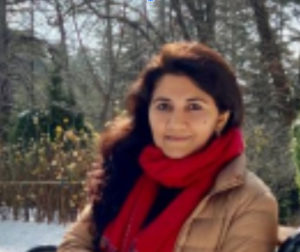Whenever my son would not do well on a test, I would tell him – “you have such a clever mind, this stuff is easy for you, you just need to apply yourself a bit.” Various versions of this statement would be doled out to him during my many attempts to motivate. It was only after I read about ‘Fixed and Growth mindsets’ that I realized where I was going wrong.
Dr. Carol S Dweck writes in her much-acclaimed book – Mindset – “Every word and action can send a message. It tells children how to think about themselves. It can be a fixed-mindset message that says: You have permanent traits and I’m judging them. Or it can be a growth-mindset message that says: You are a developing person and I am committed to your development.”
The language of the two mindsets is completely different. The difference between the two is the difference between being and becoming. The fixed mindset says – ‘you are this and this you will be’, while the growth mindset would say – ‘you maybe this right now but you can learn to be anything you choose’. The first statement is tied down in helplessness and rigid limitations, the second gives control and power.
The idea that I was instilling in my son, that he was bright and did not really need to work too much to do well, was doing the exact opposite of motivating him. It was a typical ‘fixed mindset’ statement which told him that his mother saw him as being intelligent and that his kind of intelligence did not really need any effort on his part, so he did not put any. It also made him want to maintain the status quo because if he tried too hard and still did not do well on his tests, then the cat would be out of the bag and everyone will know that he wasn’t really any good at it anyway.
Dr. Dweck also writes – “Is your child trying to tell you something you don’t want to hear? If you can’t hear what your child is trying to tell you – in words or actions – then you don’t know where your child is. Enter the growth mindset and listen harder.” These lines pointed to the fact that before any shift in mindset, it was important to accept where and what the child was at that point. But how could I accept my children, when I hadn’t really ever accepted myself completely? After having constantly denied parts of myself, and with a permanent internal critic, how could I genuinely open my heart to accept all aspects of my child – the good, the not so good and the unfinished?
The shift had to happen within before it could impact my interactions outside. I could not be speaking one language to myself inside my head and a different one to the children. It’s thoughts that become words and actions. This is how my journey to self-acceptance began. I dropped the harsh judgment that I always subjected myself to, accepted myself as an imperfect, unfinished being, and it was liberating. I started liking myself – for my desire to improve, for my high goals and aspirations, for never shying away from hard work. I started to understand myself more clearly, and as my relationship with the self became more loving, so did my relationship with the world. As I gave myself permission to try and fail, I gave the same freedoms to my children.
As we do everything in our power to provide the best of the world to our children, we must endeavor to provide them with an environment that is built on trust and acceptance. An environment can only be nurturing if the child is completely accepted with love, if they aren’t afraid to speak up for the fear of saying something wrong or to try difficult tasks at the risk of failure. After all, none of us are perfect and perfection can sometimes be a hindrance to learning. In Dr Dweck’s words – “Becoming is better than being”.
 |
Bhavna Dewan Bhatia, A mother and yoga practitioner, lover of books and seeker of silence & solitude |


